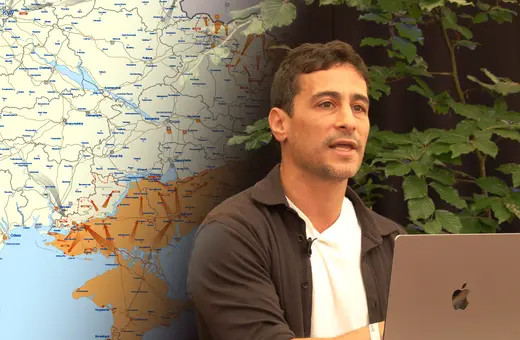The Russian invasion of Ukraine has led to the biggest ever economic sanction response since World War II. Although economic warfare has been fought before, we are entering a new, unprecedented era of the weaponization of money, writes Alan Bollard.
When Russia began its invasion of Ukraine it was soon clear that there would be widespread condemnation by other countries, but little military assistance. What has eventuated is the biggest declaration of economic warfare since World War II.
Every war has an economic element; financing military engagement has always been a costly exercise, made more difficult by disrupted funding markets. Wars have always been paid for by looting, by taxing, by borrowing and/or by inflation. The mid-19th century Crimean War nearly bankrupted the Russian Treasury, and forced the British into reforms for financing the military. Ultimately, the two world wars left a legacy of big governments and huge debts; most public debt built up in Europe has originated from warfare.
Economic warfare has been a tool for military strategists forever. The castles of Middle Ages Europe, the palisades of Central America, and the fortified hills of New Zealand Māori were built to withstand military attack, but often fell to economic siege, if the attacking army could cut off water and food supplies long enough. Economic siege on the battlefield might extend to blocking supply lines and trade routes. Such economic blockades have a long history in China. Napoleon tried them against Britain without much effect. More ‘successful’ was the British naval blockade of the Central Powers in World War I, that cut critical food supplies to Germany and Austria-Hungary contributing to many civilian deaths but ending the military stalemate. Russian coastal blockades in the Black Sea similarly helped starve many Ottomans.
___
Today computerised econometric models offer much more sophisticated ways to target economic sanctions.
___
Peacetime blockades took the form of economic embargoes. Concerned by growing Japanese economic aggression in China and threats to Southeast Asia in the 1930s, the US and UK imposed a series of embargoes. The final step was the US oil embargo in 1940, which created a siege mentality and ultimately sparked the Pearl Harbour attacks.
Realising the potential of such embargoes, economists have developed tools to map out pressure points in an adversary’s economy. Most well-known was Russian-American economist Wassily Leontief’s input-output mapping, which was used by US Bomber Command in World War II to determine ways to paralyse an economy: bomb rail lines or oil refineries or aeroplane plants? As World War II gave way to the Cold War, input-output mapping was used by both the United States and the Soviet Union to guide their nuclear targets. Today computerised econometric models offer much more sophisticated ways to target economic sanctions.
In recent years, economic sanctions have been used in peacetime to exert pressures on territorial and political disputes. As a virtual form of hostility, economic warfare has some obvious advantages. One is its moral clarity – sanctions do not kill people, at least not directly (though sanctioned states may suffer higher mortality and poor living standards). There are no photos of smoking tanks and bombed-out hospitals. They do not require ‘boots on the ground’, and there are no body bags to alarm the public. They also make it possible for third countries to show support to a bilateral dispute. It is much easier to sign up to a UN sanctions obligation than a NATO military obligation. And it is relatively easy (domestic politics permitting) to terminate sanctions, without the drama of military evacuation (such as Kabul).





















Join the conversation